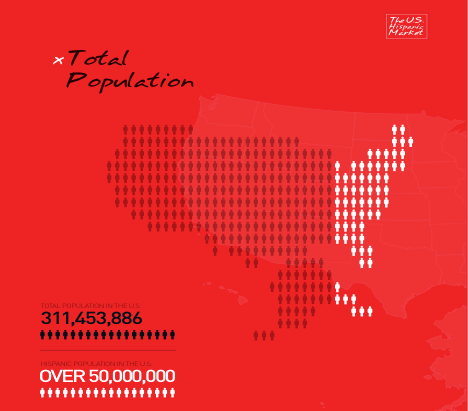Hispanic Millennials require New Marketing Strategies
Hispanic Millennials by the numbers. What are they like and how do they differ from other Hispanics or other Gen Yrs? Read on.
(The Hispanic Millennials require New Marketing Strategies article has been updated on 2015)
Latinos will account for more than 80% of the growth in the population of 18- to 29-year-olds over the next few years and this makes them a key demographic for marketers targeting young consumers. However, marketers need to develop their marketing strategies taking into account the rapid changes under way in the composition of the population of the Hispanic youth.
Hispanic Millennials by the Numbers
In 2015, a total of 22.7MM Hispanic Americans – that is a 42% of the total U.S. Hispanic population – are Millennials. This represents 27% of all U.S. Gen Yrs.
A pretty impressive number when compared to a total of 10.8MM Gen Xrs, and 7.4MM Latino Boomers.
Now, let’s take a look at the 2010 Census data compiled by the Pew Hispanic Center:
- 58% of Latinos in the 20- to 29-year-old age group are U.S.-born,
- 81% of Latinos in the 15- to 19-year-old age group are U.S.-born, and
- 95% of those in the 10- to 14-year-old age segment are U.S.-born
Thus, within a few more years, U.S.-born Latinos will dominate the 18- to 29-year-old age segment within the Hispanic population.
Don’t take these numbers lightly just because they were gathered in 2010. It is only less than 5 years ago and all you need to do to comprehend the magnitude of this impact is subtract 5 years to each segment and the percentage of U.S. Born Hispanics dominates even more.
What are Hispanic Millennials like?
Unlike their immigrant parents who tried to be less visible, Hispanic millennials want to “stand out and be noticed.” They still embrace parts of their culture—mostly family, music and food— and they have incorporated American values such as open-mindedness, especially in their relationships. Hispanic Millennials are abandoning class hierarchies and embracing working class moral standards. They want to become heroes, healers, rescuers as well as small business owners.
The proportion of foreign-born/U.S.-born population has been rapidly changing among young Latinos and this has had a significant impact on the media usage habits of Hispanic Millennials, who for the most part are now the children, grandchildren or even great-grandchildren and beyond of Latino immigrants. A phenomenal 73% of 18- to 29-year-old Latinos watched English-only television or a combination of English and Spanish language television in the past seven days. Only 4% watched Spanish-language television alone.
Hispanic millennials (see Hispanic Market Trends Forecast) are nearly 66 percent more likely to connect via mobile than non-Hispanic whites. And they are nearly twice as likely to own a tablet such as an iPad. Online, Hispanic millennials are just as likely as other millennials to be heavy Facebook users but they are almost twice as likely to use YouTube.
When Millennial Latinos read magazines or visit websites, English predominates even more. They are more likely to read English-language magazines alone then they are to look into a combination of English and Spanish magazines (28% vs. 21%). When going online, 18- to 29-year-old Latinos are even more likely to choose to visit English-language websites alone rather than both English- and Spanish-language sites (38% vs. 25%).
Still, Hispanic millennials are maintaining close ties with their cultural heritage. The Pew Hispanic found that among the U.S.-born children of Hispanic immigrants, country of origin is still important. As far as self-identification, 33 percent of second generation Latinos use American first, 21 percent refer to themselves first by the terms Hispanic or Latino, and 41 percent refer to themselves first by the country of origin of their parents.
While Hispanic millennials may want to make it on their own, they are more likely to still be living in their parents’ home. More millennials are doing this due to the economy and delayed marriage and children trends. But Latinos are “the” most likely to live in a multi-generation home.
They feel like a generation and have great expectations for themselves. They are also aware of their future family obligations and the difficulties they will face to be able to support their parents and grand-parents.
Unlike their Gen Y counterparts who have been told over and over again that they are special, and expect the world to treat them that way, Hispanic Millennials see themselves as part of their families, communities and not separated from the rest.
As a result, marketers in both the Latino and youth markets have had to revamp their marketing strategies about how to reach this key demographic.












Hispanics/Latinos remain America’s most populous demographic NOT actively turning out to vote in Federal, State and Local elections–even in geographic regions with high ethnic concentrations. Could that change by this November?
I hope so, Steve. The new generation seems to be more involved and active regarding politics, but we won’t know until it happens. The belief has always been one of “My vote won’t make a difference” but it seems to have changed.